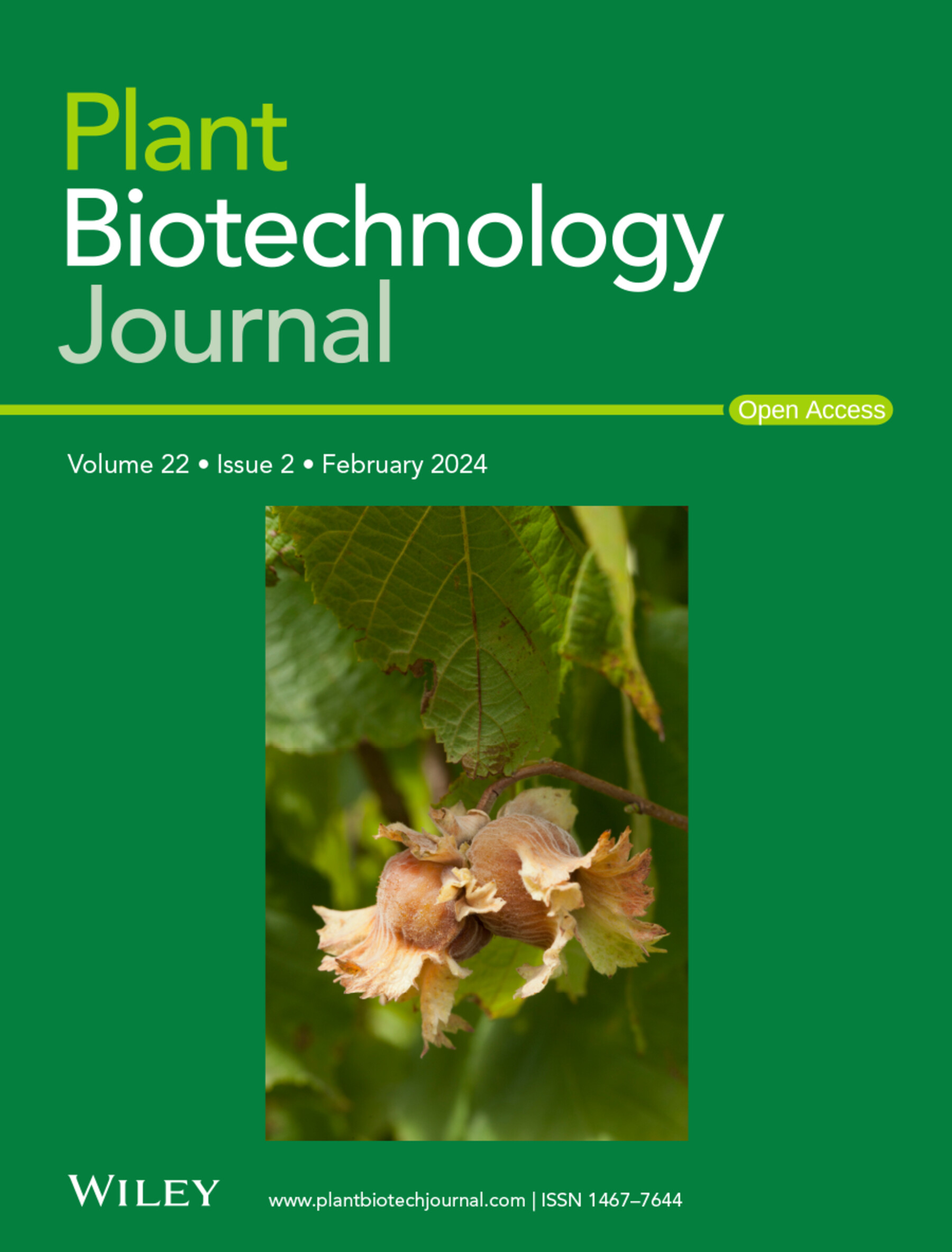Verticillium dahliae effector Vd06254 disrupts cotton defence response by interfering with GhMYC3-GhCCD8-mediated hormonal crosstalk between jasmonic acid and strigolactones
IF 10.1
1区 生物学
Q1 BIOTECHNOLOGY & APPLIED MICROBIOLOGY
引用次数: 0
Abstract
Verticillium dahliae is among the most destructive plant pathogens, posing a significant threat to global cotton production. Cotton plants have developed sophisticated immune networks to inhibit V. dahliae colonization. Ingeniously, V. dahliae employs numerous virulent effectors to surmount plant immune responses. However, the pathogenic mechanisms of V. dahliae-derived effectors remain elusive. In this study, we demonstrate that the Vd06254 effector from V. dahliae disrupts the synergistic interaction between jasmonic acid (JA) and strigolactones (SL), thereby suppressing cotton immunity. Ectopic expression of Vd06254 enhanced susceptibility to both viral and V. dahliae infections in Nicotiana benthamiana and cotton, respectively. Vd06254 directly interacts with the JA pathway regulator GhMYC3. The nuclear localization signal (NLS) was found to be essential for the virulence of Vd06254 and its interaction with GhMYC3. Additionally, overexpression and knockout of GhMYC3 in cotton modified the plant's resistance to V. dahliae. Our findings further reveal that GhMYC3 inhibits the expression of GhCCD8 by binding to its promoter, potentially regulating SL homeostasis in cotton through a negative feedback loop. This repression was enhanced by Vd06254, highlighting its crucial role in modulating cotton immunity and illustrating how V. dahliae effectors reprogram cotton transcription to disrupt this regulatory mechanism.大水花黄萎病效应物Vd06254通过干扰ghmyc3 - ghccd8介导的茉莉酸和独角甾内酯之间的激素串扰破坏棉花防御反应
大丽轮枝菌是最具破坏性的植物病原体之一,对全球棉花生产构成重大威胁。棉花植物已经发展出复杂的免疫网络来抑制大丽轮枝菌的定殖。巧妙的是,V. dahliae 使用了大量毒性效应因子来克服植物的免疫反应。然而,大丽花病毒衍生效应子的致病机制仍然难以捉摸。在本研究中,我们证明了大丽花病毒的 Vd06254 效应子能破坏茉莉酸(JA)和糙叶内酯(SL)之间的协同作用,从而抑制棉花的免疫。Vd06254 的异位表达分别增强了烟草和棉花对病毒和大丽花病毒感染的敏感性。Vd06254 与 JA 通路调节因子 GhMYC3 直接相互作用。研究发现,核定位信号(NLS)对 Vd06254 的毒力及其与 GhMYC3 的相互作用至关重要。此外,在棉花中过表达和敲除 GhMYC3 会改变植物对大丽花病毒的抗性。我们的研究结果进一步揭示,GhMYC3 通过与其启动子结合抑制 GhCCD8 的表达,从而可能通过负反馈环路调节棉花中的 SL 平衡。Vd06254 增强了这种抑制作用,突显了它在调节棉花免疫力中的关键作用,并说明了大丽花病毒效应物是如何重编程棉花转录以破坏这种调节机制的。
本文章由计算机程序翻译,如有差异,请以英文原文为准。
求助全文
约1分钟内获得全文
求助全文
来源期刊

Plant Biotechnology Journal
生物-生物工程与应用微生物
CiteScore
20.50
自引率
2.90%
发文量
201
审稿时长
1 months
期刊介绍:
Plant Biotechnology Journal aspires to publish original research and insightful reviews of high impact, authored by prominent researchers in applied plant science. The journal places a special emphasis on molecular plant sciences and their practical applications through plant biotechnology. Our goal is to establish a platform for showcasing significant advances in the field, encompassing curiosity-driven studies with potential applications, strategic research in plant biotechnology, scientific analysis of crucial issues for the beneficial utilization of plant sciences, and assessments of the performance of plant biotechnology products in practical applications.
 求助内容:
求助内容: 应助结果提醒方式:
应助结果提醒方式:


